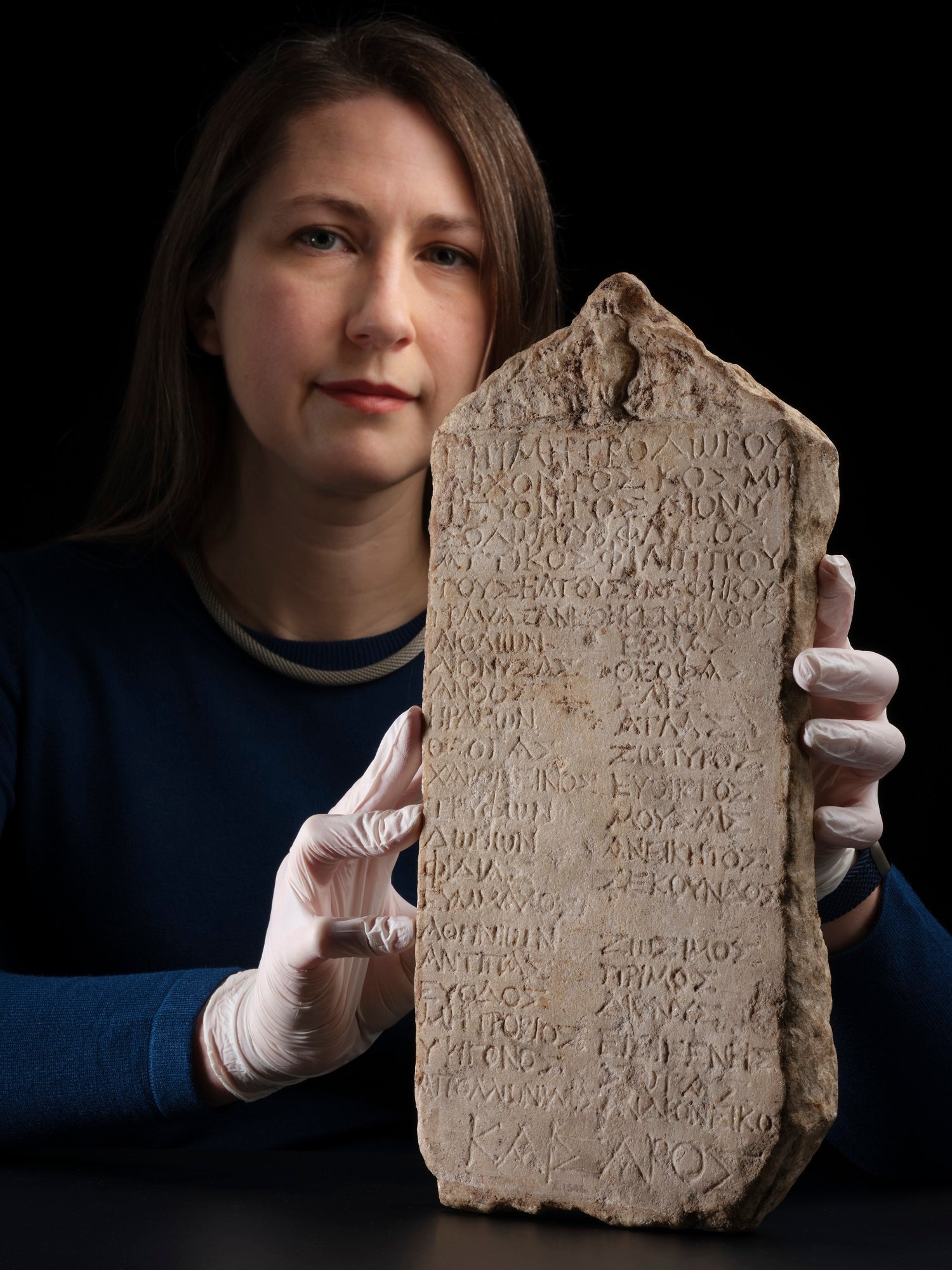Ancient Greek equivalent of ‘graduate school yearbook’ discovered on stone
The stone has been in the National Museums Scotland collection since the late 19th century.

Historians have discovered that an ancient Greek inscription on a marble slab in a museum collection is a rare, previously unknown “graduate school yearbook” type list of names.
Experts looked at the stone, which has been stored in the National Museums Scotland (NMS) collection for more than 100 years, as part of a project to publish English translations of inscriptions from ancient Athens held in UK collections.
They discovered that the carved letters on the marble in the NMS collection record the names of young men inducted into the ephebate, a year of military and civic training undertaken around the age of 18, which was intended to prepare them for life as adults.
It lists a group of 31 friends who went through the Athenian ephebate together during the reign of the Roman Emperor Claudius (AD 41-54) and was intended to commemorate the close relationships they had formed.
When they first read of a reference to it, experts thought it might be a copy of a similar list in the collection of the Ashmolean Museum in Oxford, but realised that was not the case when they saw it.
Dr Peter Liddel, professor of Greek history and epigraphy at the University of Manchester, who led on the discovery, said: “Because of lockdown we were not able to travel to the museum until July 2021, and on seeing it we realised that this was not a copy of an already known inscription but it was a completely unique new discovery which had been in the storerooms of the NMS for a very long time, since the 1880s, and it listed a group of young men who called themselves co-ephebes or co-cadets and friends.
“It turned out to be a list of the cadets for one particular year during the period 41-54 AD, the reign of Claudius, and it gives us new names, names we’d never come across before in ancient Greek, and it also gives us among the earliest evidence for non-citizens taking part in the ephebate in this period.
“It is a really interesting inscription, partly because it’s new but also because it gives us new names and a bit of insight into the sort of access or accessibility of this institution which is often associated with elite citizens.”
It's the ancient equivalent of a graduate school year book
It is not known where the list was displayed but it is thought it could have been put up somewhere such as the gymnasium where the young men trained.
Dr Liddel said: “It was made to create a sense of camaraderie and comradeship among this group of people who had been through a rigorous training programme together and felt like they were part of a cohort.
“It’s the ancient equivalent of a graduate school yearbook, although this is one which is created by a number of individuals who wanted to feel like they had come together as friends.”
The inscription is published this week on the website www.atticinscriptions.com
Experts said the discovery represents an important new source of information about elite Athenian society in the mid-first century AD, a period that was crucial for Athens as it adapted to its place under the Roman Empire.
The Arts and Humanities Research Council-sponsored Attic Inscriptions in UK Collections is a four-year project, led by Cardiff University with the University of Durham and the University of Manchester.
Dr Margaret Maitland, principal curator, Ancient Mediterranean, at NMS, said: “To have the team come and visit and confirm it was something that had never been published before was really thrilling.”
Inscriptions from this period are relatively rare, and experts said this makes it all the more striking that the newly discovered ephebic list belongs to the same year and cohort as the inscription at the Ashmolean.
Bookmark popover
Removed from bookmarks